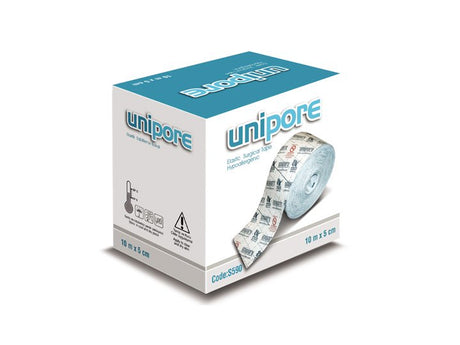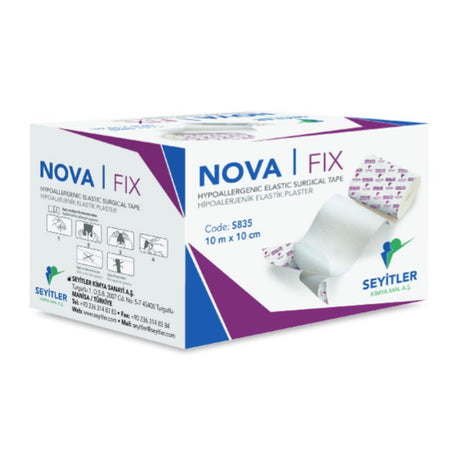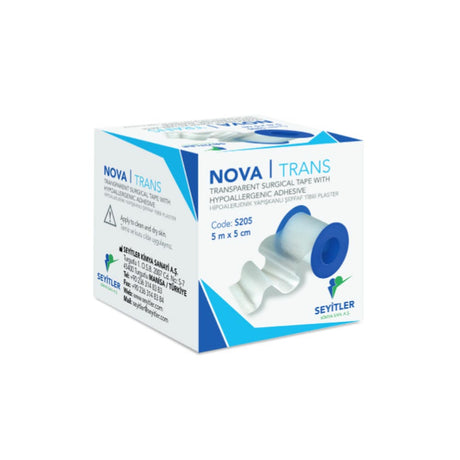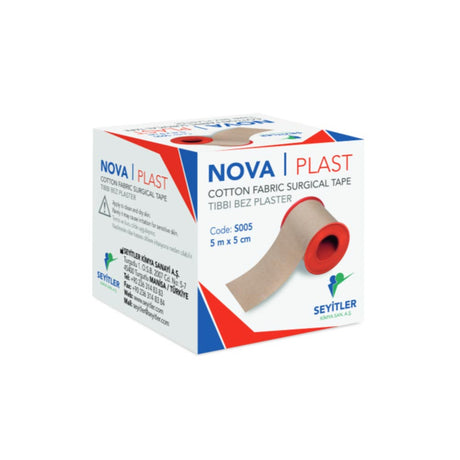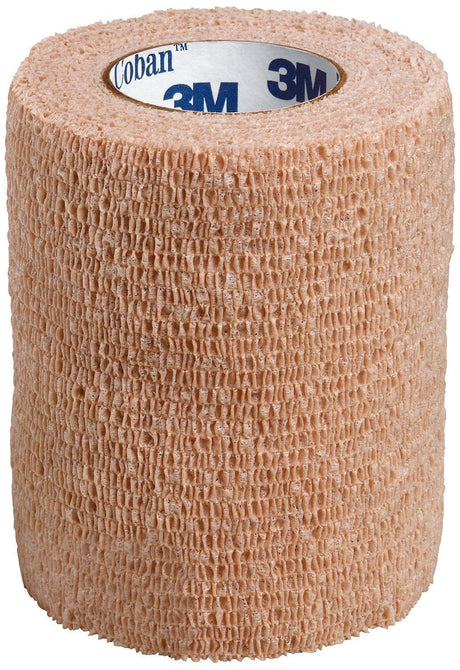Seyitler
Sterile Nova Eye Pad Eye Patch with hypoallergenic adhesive
From £1.05 incl. VATFrom £0.88 excl. VATUnit price /UnavailableADC
ADC Medical Shear Scissors Medicut EMT Shears 18cm (7¼") Medical-Grade Utility Shears
+1From £5.85 incl. VATFrom £4.88 excl. VATUnit price /UnavailableSeyitler
Transparent Film Dressings Wound Care MAXIPORE PU Film Sterile Waterproof
From £9.30 incl. VATFrom £7.75 excl. VATUnit price /UnavailableSeyitler
Transparent Film Dressings Wound Care With Non Adhesive Pad MAXIPORE PU Dress Sterile Waterproof
From £6.75 incl. VATFrom £5.63 excl. VATUnit price /UnavailableSeyitler
Surgical silk tape for securing medical devices and fixation of dressings
From £9.00 incl. VATFrom £7.50 excl. VATUnit price /UnavailableSeyitler
5m-10m Elastic Surgical Tape, NOVA FIX Hypoallergenic And Flexible -Width (2.5cm x 20cm)
£7.00 incl. VAT£5.83 excl. VAT£7.70Unit price /UnavailableSeyitler
Non Woven Adhesive Wound Dressing MAXIPORE Dress 9cm Wide 50 Per Box
From £7.50 incl. VATFrom £6.25 excl. VATUnit price /UnavailableSeyitler
5m-10m Transparent Surgical Tape Waterproof NOVA TRANS Widths
From £21.96 incl. VATFrom £18.30 excl. VATUnit price /UnavailableSeyitler
MAXIPORE Pu Iv Sterile Transparent Iv Fix Transparent U-Cut Dressing
From £19.50 incl. VATFrom £16.25 excl. VATUnit price /UnavailableSeyitler
5m Surgical Tape NOVA PLAST Cotton Fabric Surgical Tape Width (1.25cm-10cm) Skin-Friendly
From £8.64 incl. VATFrom £7.20 excl. VATUnit price /Unavailable3M Health Care
3M™ Tegaderm™ Transparent Film Dressing Frame Style 1632, 12 cm x 12 cm
Low stock (4 units)£17.99 incl. VAT£14.99 excl. VATUnit price /Unavailable3M Health Care
3M Tegaderm Film Transparent Film Dressing Frame Style (1623W), 100 Each/Carton, 4 Carton/Case
Low stock (3 units)£49.19 incl. VAT£40.99 excl. VATUnit price /Unavailable3M Health Care
3M Coban Self-Adherent Wrap MM1581
Low stock (3 units)£55.20 incl. VAT£46.00 excl. VATUnit price /Unavailable3M Health Care
3M™ Tegaderm™ +Pad Film Dressing with Non-Adherent Pad 9x10cm
Low stock (3 units)£26.39 incl. VAT£21.99 excl. VATUnit price /Unavailable3M Health Care
3M™ Medipore™ +Pad Soft Cloth Adhesive Wound Dressing with Non-Adherent Pad 3566E, 10 cm x 10 cm
Low stock (5 units)£7.95 incl. VAT£6.63 excl. VATUnit price /Unavailable3M Health Care
3M™ Tegaderm™ Transparent Film Dressing Frame Style, 1622W
Low stock (5 units)£35.99 incl. VAT£29.99 excl. VATUnit price /Unavailable3M Health Care
3M Tegaderm Transparent Film Dressing Frame Style (1628) 15-20 cm
Low stock (5 units)£38.39 incl. VAT£31.99 excl. VATUnit price /Unavailable3M Health Care
3M Tegaderm Transparent Film Dressing (1624W), 6-7 cm, 100EA/box
Low stock (3 units)£38.39 incl. VAT£31.99 excl. VATUnit price /Unavailable3M Health Care
3M Tegaderm +Pad Film Dressing with Non-Adherent Pad (3582) 5x7cm
Low stock (5 units)£22.79 incl. VAT£18.99 excl. VATUnit price /Unavailable3M Health Care
3M Tegaderm Transparent Film Dressing Frame Style (1626W), 10x12 cm, 50EA/box
Low stock (3 units)£39.59 incl. VAT£32.99 excl. VATUnit price /Unavailable3M Health Care
3M Transpore Surgical Tape, MM1527-1, (2.5 cm x 9.1 m)
Low stock (5 units)£14.39 incl. VAT£11.99 excl. VATUnit price /Unavailable3M Health Care
Transpore Medical Tape (1.25 cm x 9.1 m) 1527-0
Low stock (5 units)£14.99 incl. VAT£12.49 excl. VATUnit price /Unavailable3M Health Care
3M Steri-Strip Reinforced Adhesive Skin Closures R1546, 6 mm x 100 mm
Low stock (4 units)£50.39 incl. VAT£41.99 excl. VATUnit price /Unavailable3M Health Care
3M Steri-Strip Skin Closure 6 x 75mm - Per 50, Code: R1541
Low stock (5 units)£23.99 incl. VAT£19.99 excl. VATUnit price /Unavailable3M Health Care
Micropore Tape 2.5cm x 9.1m (12 Rolls) (MM1530-1)
Low stock (5 units)£8.75 incl. VAT£7.29 excl. VATUnit price /Unavailable3M Health Care
3M Micropore Surgical Tape, 1533-0/single
Low stock (5 units)£9.59 incl. VAT£7.99 excl. VATUnit price /Unavailable3M Health Care
Low stock (10 units)From £9.60 incl. VATFrom £8.00 excl. VATUnit price /Unavailable3M Health Care
Blenderm Surgical Tape, MM1525-1, 2.5 cm x 4.5 m
Low stock (5 units)£32.40 incl. VAT£27.00 excl. VATUnit price /UnavailableSeyitler
Transparent Non Woven Wound Film Dressing MAXIPORE Dress 9cm Wide 50 Per Box
Low stock (9 units)From £11.34 incl. VATFrom £9.45 excl. VATUnit price /UnavailableSeyitler
Skin Closure Strips MAXI-STRIP Sterile Wound Closure Adhesive Strip 2 Sizes
Very low stock (2 units)£34.50 incl. VAT£28.75 excl. VATUnit price /UnavailableSeyitler
Non Woven Dressing Pad MAXIPORE IV Sterile 50 Per Box Hypoallergenic
Low stock (3 units)£9.00 incl. VAT£7.50 excl. VATUnit price /Unavailable
















